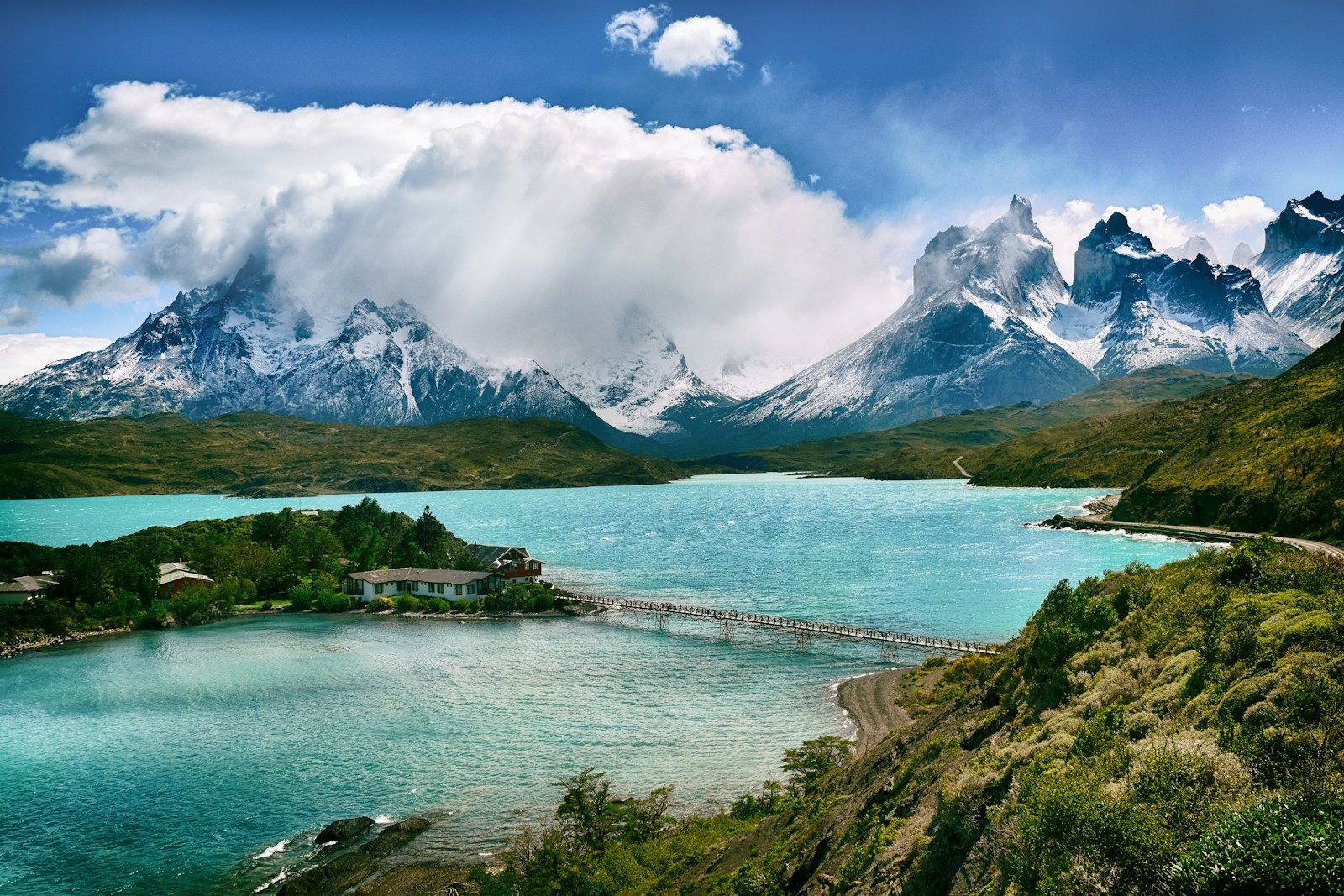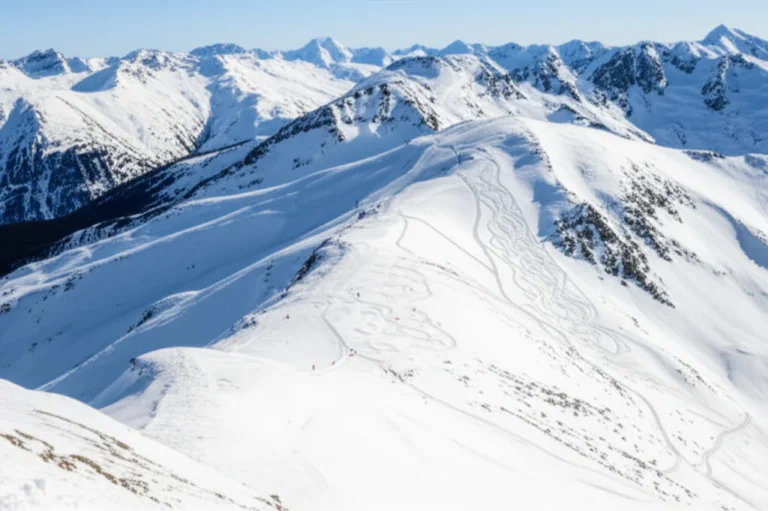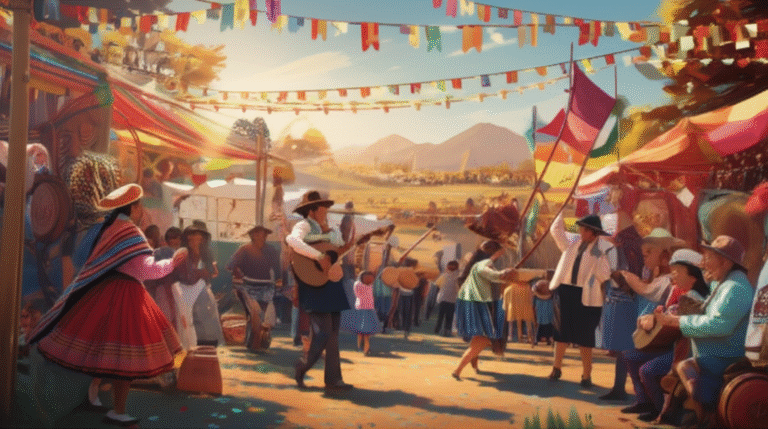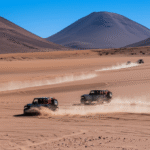Support our educational content for free when you purchase through links on our site. Learn more
How Chile’s Weather Changes by Region + 10 Best Seasonal Activities 🌦️ (2025)
Imagine standing in the Atacama Desert under a sky so clear you can see the Milky Way in dazzling detail, then hopping on a plane to Patagonia’s icy wilderness where fierce winds whip through towering glaciers—all in the same trip. That’s Chile for you: a country of breathtaking contrasts, where weather varies dramatically across regions and seasons, shaping the perfect playground for every kind of adventurer.
In this guide, we’ll unravel how Chile’s weather shifts from north to south and season to season, revealing the best activities to match each climate zone. Whether you’re craving summer beach vibes in Valparaíso, autumn wine harvests in the Central Valley, or winter skiing in the Andes, we’ve got you covered with insider tips, personal stories, and practical advice. Ready to master Chile’s climate and plan your dream itinerary? Let’s dive in!
Key Takeaways
- Chile’s climate spans from the driest desert in the north to icy, windy Patagonia in the south, creating diverse microclimates that affect travel plans.
- Each season offers unique experiences: spring blooms and trekking, summer beaches and glacier hikes, fall harvest festivals and colorful foliage, winter skiing and hot springs.
- Packing smart and layering clothes is essential due to rapid weather changes and vertical geography.
- Top activities by region and season include stargazing in Atacama, wine tours in the Central Valley, hiking in Patagonia, and skiing in the Andes.
- Insider tips and personal anecdotes highlight the importance of flexibility and local knowledge for the best experience.
👉 Shop recommended gear for Chile’s diverse climates:
Ready to explore Chile’s weather wonders? Keep reading for the full breakdown and expert advice!
Table of Contents
- ⚡️ Quick Tips and Facts About Chile’s Weather and Seasons
- 🌎 Understanding Chile’s Diverse Climate Zones: A Weather Overview
- 🗺️ Exploring Chile’s Distinct Regions: Weather Patterns and Seasonal Highlights
- 🌸 Springtime in Chile: Blossoms, Mild Weather & Perfect Outdoor Activities
- ☀️ Summer Adventures: Best Warm-Weather Activities Across Chile’s Regions
- 🍂 Fall Foliage and Festivals: Experiencing Autumn Weather in Chile
- ❄️ Winter Wonders: Snow, Skiing, and Cozy Escapes in Chile’s Cold Season
- 🌡️ How Chile’s Microclimates Affect Your Travel Plans: Insider Tips
- 🏞️ Best Seasonal Activities by Region: From Atacama Desert to Patagonia
- 🧳 Packing Smart for Chile’s Weather: What to Bring Each Season
- 📅 Chile’s Seasonal Calendar: When to Visit for Your Dream Experience
- 🌟 Insider Stories: Our Personal Weather Adventures Across Chile
- 🔍 Weather Myths and Facts About Chile: What You Need to Know
- 🎯 Conclusion: Mastering Chile’s Weather for an Unforgettable Trip
- 🔗 Recommended Links for Chile Weather and Travel
- ❓ Frequently Asked Questions About Chile’s Weather and Seasons
- 📚 Reference Links and Sources
⚡️ Quick Tips and Facts About Chile’s Weather and Seasons
Welcome to your ultimate weather cheat sheet for Chile! 🇨🇱 Whether you’re dreaming of the sun-drenched Atacama Desert or the frosty peaks of Patagonia, knowing what to expect from Chile’s climate is your golden ticket to an unforgettable trip. Here are some quick-fire facts to get you started:
- Chile’s climate varies dramatically from the driest desert on Earth in the north to icy glaciers in the south.
- The country experiences four distinct seasons: summer (Dec-Feb), autumn (Mar-May), winter (Jun-Aug), and spring (Sep-Nov).
- Northern Chile is mostly dry year-round, but summer can bring rare rains and spectacular thunderstorms in the Altiplano.
- Central Chile enjoys a Mediterranean climate with hot, dry summers and cool, rainy winters.
- Southern Chile and Patagonia are cooler and wetter, with strong winds and snow in winter.
- Easter Island has a subtropical climate with mild temperatures year-round but can be windy.
- Best times for outdoor adventures generally fall between spring and fall, but winter is a paradise for skiers and snow lovers.
- Always pack layers! Chile’s vertical geography means you can experience multiple climates in one day.
For a deeper dive on when to visit, check out our detailed guide on What are the best times to visit Chile for a vacation?.
🌎 Understanding Chile’s Diverse Climate Zones: A Weather Overview
Chile is a land of extremes, and that’s reflected in its climate. Stretching over 4,300 km (2,670 miles) north to south but only about 177 km (110 miles) wide on average, Chile’s geography creates microclimates that can baffle even seasoned travelers.
The Four Macro-Bioclimates of Chile
- Northern Chile: The Atacama Desert reigns supreme here, the driest non-polar desert on Earth. Expect scorching days and freezing nights, with almost no rainfall. The Pacific Humboldt Current cools the coast, creating fog banks known locally as Camanchaca.
- Central Chile: Think Mediterranean vibes — hot, dry summers and cool, wet winters. This is Chile’s agricultural heartland, famous for vineyards and fruit orchards.
- Southern Chile: Temperate oceanic climate with abundant rainfall, lush forests, and fjords. Winters are chilly but not extreme, with frequent rain and occasional snow.
- Patagonia and Tierra del Fuego: Harsh, cold, and windy. Expect snow, glaciers, and unpredictable weather year-round.
The Wikipedia climate of Chile page is a treasure trove if you want to geek out on the technical climate classifications and charts.
🗺️ Exploring Chile’s Distinct Regions: Weather Patterns and Seasonal Highlights
Chile’s regions are like chapters in a weather novel — each with its own plot twists and character. Let’s break down what you can expect:
| Region | Climate Type | Seasonal Highlights | Best Activities by Season |
|---|---|---|---|
| Atacama Desert | Arid desert | Very dry year-round; summer thunderstorms in Altiplano | Stargazing, desert trekking, geysers |
| Elqui Valley | Semi-arid | Warm summers, mild winters | Wine tours, observatories, hiking |
| Central Valley | Mediterranean | Hot dry summers, rainy winters | Vineyard tours, city sightseeing, skiing (winter) |
| Lake District | Temperate oceanic | Rainy winters, mild summers | Trekking, fishing, hot springs |
| Patagonia | Cold oceanic/alpine | Long summer days, cold winters with snow | Glacier tours, hiking, wildlife watching |
| Easter Island | Subtropical maritime | Mild temperatures year-round, windy | Beach activities, cultural tours |
Our team at Chile Vacay™ has trekked from the sunbaked Atacama salt flats to the snowy peaks of Torres del Paine — and trust us, packing for these extremes is a skill worth mastering!
🌸 Springtime in Chile: Blossoms, Mild Weather & Perfect Outdoor Activities
Spring (September to November) in Chile is like a fresh canvas — flowers bloom, temperatures rise, and the country shakes off winter’s chill.
What to Expect
- Central Chile: Mild temperatures (50-70°F / 10-21°C), occasional spring showers. The vineyards around Santiago and the Elqui Valley burst into life.
- Patagonia: Increasing daylight (up to 15 hours in November), temperatures climb to the 50s-60s °F (10-20°C), ideal for trekking.
- Northern Chile: Still dry and warm, with the Altiplano sometimes experiencing rare summer rains and spectacular lightning storms.
Top Spring Activities
- Wine tasting in the Central Valley: The vineyards are lush, and the crowds are smaller than summer.
- Hiking Torres del Paine: Trails open up, and the wildflowers are stunning.
- Stargazing in Atacama: Clear skies and pleasant nights make spring perfect for astronomy tours.
Pro tip: Bring a waterproof jacket and layers — spring showers can surprise you, especially in central and southern Chile.
☀️ Summer Adventures: Best Warm-Weather Activities Across Chile’s Regions
Summer (December to February) is peak travel season, and for good reason! The weather is warmest, days are longest, and outdoor activities flourish.
Regional Summer Highlights
- Northern Chile: Hot and dry, perfect for desert tours and visiting the salt flats. Coastal cities like Antofagasta offer beach escapes.
- Central Chile: Warm to hot (up to 80°F / 27°C), dry weather ideal for exploring Santiago, Valparaíso, and the beaches of Viña del Mar.
- Southern Chile & Patagonia: Cooler (50-60°F / 10-16°C), but with long daylight hours perfect for hiking, kayaking, and wildlife spotting.
Must-Do Summer Activities
- Beach hopping: From La Serena to the beaches near Valparaíso, soak up the sun and surf.
- Patagonia trekking: Take advantage of the mild weather to explore glaciers and national parks.
- Astronomy tours: The Atacama Desert’s clear skies shine brightest in summer nights.
Packing tip: Sunscreen and hats are non-negotiable in the north; meanwhile, bring a warm fleece for Patagonia evenings.
🍂 Fall Foliage and Festivals: Experiencing Autumn Weather in Chile
Autumn (March to May) is a magical time when Chile’s landscapes turn golden and crisp.
Weather Patterns
- Central Chile: Cooling temperatures, increased rainfall, especially in April and May.
- Southern Chile: Rain becomes more frequent, and temperatures drop.
- Northern Chile: Still dry and pleasant, with cooler nights.
Seasonal Highlights and Activities
- Wine harvest festivals: The Central Valley celebrates with grape stomping and local food.
- Hiking in the Lake District: Fall colors paint the forests in fiery reds and oranges.
- Wildlife watching: Autumn is great for spotting migratory birds and marine life.
Our Chile Vacay™ team loves autumn for the quieter trails and authentic local experiences — plus, the weather is still comfortable for outdoor adventures.
❄️ Winter Wonders: Snow, Skiing, and Cozy Escapes in Chile’s Cold Season
Winter (June to August) transforms Chile into a snowy playground, especially in the Andes and Patagonia.
Chill Zones
- Central Chile: Snow blankets the Andes, turning resorts like Valle Nevado and Portillo into ski havens.
- Southern Chile & Patagonia: Cold, wet, and windy with snowfall in higher elevations.
- Northern Chile: Mild and dry, though nights can be chilly.
Top Winter Activities
- Skiing and snowboarding: Chile’s world-class ski resorts attract winter sports enthusiasts globally.
- Hot springs: Relax in natural thermal baths in the Lake District and Patagonia after a chilly day.
- Wildlife tours: Winter is prime time for penguin spotting in southern Chile.
Insider tip: Book ski passes and accommodations early — winter is peak season for snow lovers!
🌡️ How Chile’s Microclimates Affect Your Travel Plans: Insider Tips
Chile’s geography creates pockets of microclimates that can surprise even the most prepared traveler.
Examples of Microclimate Effects
- Valparaíso’s hills can be foggy and cool while nearby beaches bake in the sun.
- Santiago’s urban heat island means the city can be warmer than surrounding valleys.
- The Atacama Desert’s coastal fog (Camanchaca) provides moisture to unique ecosystems despite the arid climate.
Travel Tips
- Always check local weather forecasts before heading out.
- Pack versatile clothing to adapt to sudden changes.
- Plan your itinerary to move from warmer to cooler zones or vice versa to maximize comfort.
Our team once planned a beach day near Valparaíso only to be greeted by thick fog — lesson learned: microclimates are real and fascinating!
🏞️ Best Seasonal Activities by Region: From Atacama Desert to Patagonia
Here’s a handy breakdown of the best activities by season and region so you can tailor your Chilean adventure perfectly:
| Region | Spring | Summer | Fall | Winter |
|---|---|---|---|---|
| Atacama Desert | Stargazing, desert hikes | Desert tours, salt flats | Mild trekking, observatories | Quiet desert exploration |
| Elqui Valley | Wine tours, hiking | Beach and river activities | Harvest festivals | Stargazing, cozy winery visits |
| Central Valley | Vineyard visits, city tours | Beaches, hiking | Wine harvest, cultural festivals | Skiing in Andes, museum visits |
| Lake District | Trekking, hot springs | Fishing, kayaking | Fall foliage hikes | Snowshoeing, thermal baths |
| Patagonia | Hiking, wildlife watching | Glacier tours, kayaking | Autumn colors, photography | Skiing, glacier trekking |
| Easter Island | Cultural tours, beach | Snorkeling, surfing | Mild weather, cultural events | Off-season quiet, cultural immersion |
🧳 Packing Smart for Chile’s Weather: What to Bring Each Season
Packing for Chile can feel like preparing for a weather rollercoaster 🎢. Here’s our expert advice:
Spring & Fall
- Waterproof jacket and umbrella
- Layered clothing (t-shirts, long sleeves, fleece)
- Comfortable hiking shoes
- Sun protection (hat, sunscreen)
Summer
- Light clothing (shorts, tank tops)
- Swimwear and beach gear
- Sunglasses and high-SPF sunscreen
- Light sweater or jacket for Patagonia and evenings
Winter
- Thermal base layers
- Insulated jacket and waterproof outerwear
- Warm hat, gloves, and scarf
- Sturdy boots for snow and rain
Bonus tip: A reusable water bottle and portable charger are must-haves for any season.
📅 Chile’s Seasonal Calendar: When to Visit for Your Dream Experience
Timing your trip can make all the difference. Here’s a quick seasonal calendar to help you plan:
| Season | Best Regions to Visit | Highlights |
|---|---|---|
| Spring | Central Chile, Patagonia, Atacama | Blooming flowers, trekking, stargazing |
| Summer | Northern & Central Chile, Patagonia | Beaches, hiking, festivals |
| Fall | Central & Southern Chile | Wine harvest, fall colors, fewer crowds |
| Winter | Andes ski resorts, Patagonia | Skiing, hot springs, wildlife tours |
For a full itinerary and travel tips by season, visit our Travel Tips category.
🌟 Insider Stories: Our Personal Weather Adventures Across Chile
We’ve been lucky enough to chase Chile’s weather from end to end, and here are some tales that might inspire you:
- Atacama’s lightning storms: One summer night, we witnessed a rare thunderstorm in the desert’s Altiplano — the sky lit up like a sci-fi movie!
- Patagonia’s wind challenge: Hiking Torres del Paine, we battled fierce winds but were rewarded with jaw-dropping glacier views.
- Santiago’s spring surprise: A sudden rain shower turned a city walk into a refreshing adventure, complete with rainbow sightings.
These experiences taught us that Chile’s weather is part of its charm — unpredictable, dramatic, and utterly captivating.
🔍 Weather Myths and Facts About Chile: What You Need to Know
Let’s bust some common myths and highlight cool facts:
- Myth: Chile is always sunny and warm.
Fact: Chile’s climate varies wildly; Patagonia can be freezing while the north bakes. - Myth: It never rains in the Atacama Desert.
Fact: Some areas have recorded rain, and the desert fog Camanchaca sustains life. - Fact: Easter Island’s weather is subtropical and windy year-round, so pack accordingly.
- Fact: The best stargazing in the world happens in Chile’s northern deserts, thanks to minimal light pollution.
For more myth-busting and facts, check out Chile Vacay™’s Adventure Travel section.
🎯 Conclusion: Mastering Chile’s Weather for an Unforgettable Trip
Phew! What a whirlwind tour through Chile’s incredible climate tapestry. From the blazing sun and starry skies of the Atacama Desert to the snowy peaks and wild winds of Patagonia, Chile’s weather is as diverse as its landscapes. The key takeaway? Chile is a country of contrasts, and embracing its microclimates will unlock the best experiences.
We’ve covered how each season offers unique adventures — spring’s blooming vineyards and trekking trails, summer’s beach days and glacier hikes, fall’s golden foliage and harvest festivals, and winter’s snowy slopes and cozy hot springs. Remember to pack smart, layer up, and plan your itinerary to match the weather zones you want to explore.
Our personal stories and insider tips prove that a little preparation goes a long way — and sometimes, the unexpected weather moments become the most memorable. So, whether you’re chasing desert lightning, skiing the Andes, or sipping wine under autumn leaves, Chile’s climate will be your trusty travel companion.
Ready to start packing? Don’t forget to check out our recommended gear and resources below to make your Chilean adventure seamless and spectacular!
🔗 Recommended Links for Chile Weather and Travel
Looking to gear up for your Chile trip or dive deeper into the country’s climate and activities? Here are some top picks:
-
Outdoor Gear for Chile’s Diverse Climates:
-
Books to Prepare for Your Chilean Adventure:
- Lonely Planet Chile & Easter Island — Amazon Link
- Moon Chile by Kelly McCarthy — Amazon Link
- The Rough Guide to Chile — Amazon Link
-
Travel Resources and Weather Forecasts:
- Chilean Meteorological Directorate — https://www.meteochile.gob.cl
- CalendarioChile’s Seasonal Calendar — https://www.calendariochile.com/en/chile/chilean-climate-and-seasonal-calendar
❓ Frequently Asked Questions About Chile’s Weather and Seasons
What are the most extreme weather conditions in Chile and how do they impact outdoor activities?
Chile’s extremes range from the hyper-arid Atacama Desert in the north, where some areas have never recorded rainfall, to the icy, windy Patagonia in the south. In the Atacama, daytime temperatures can soar above 30°C (86°F) while nights plunge below freezing, requiring travelers to prepare for drastic temperature swings. Outdoor activities like desert trekking and stargazing thrive here, but hydration and sun protection are critical.
In Patagonia, fierce winds (sometimes exceeding 100 km/h or 62 mph) and sudden weather changes can challenge hikers and outdoor enthusiasts. Trails like Torres del Paine require flexible plans and proper gear. Winter brings heavy snowfall, enabling skiing but limiting some trekking routes. Always check local conditions and heed ranger advice.
How does the climate vary between the Andes Mountains and the coastal regions of Chile, and what are the best times to visit each?
The Andes Mountains experience alpine and cold climates with snow in winter and cool summers, making them ideal for winter sports from June to August and hiking from December to March. Ski resorts like Valle Nevado and Portillo flourish in winter, while summer offers trekking and mountaineering.
Coastal regions, influenced by the Pacific Ocean and the Humboldt Current, have milder temperatures year-round. Summers (December to February) are warm and sunny, perfect for beach activities and city tours in places like Valparaíso and Viña del Mar. Spring and fall offer pleasant weather with fewer tourists. The best time to visit depends on your interests: winter for skiing in the Andes, summer for coastal relaxation.
What are the best winter sports and activities to enjoy in Chile’s ski resorts, such as Valle Nevado and Portillo?
Chile’s ski resorts are world-renowned for their powdery snow and stunning Andes backdrops. Valle Nevado, La Parva, and Portillo offer excellent skiing and snowboarding from June through September. Beyond downhill skiing, you can enjoy:
- Snowshoeing and cross-country skiing on groomed trails
- Snowmobile tours and heli-skiing for adrenaline junkies
- Après-ski culture with cozy lodges, hot tubs, and Chilean cuisine
These resorts cater to all skill levels, from beginners to experts. Booking early is essential during peak winter months.
What are the top recommendations for hiking and trekking in Chile’s Patagonia region during the spring and summer months?
Spring (September-November) and summer (December-March) are the prime seasons for trekking in Patagonia, with longer daylight and more stable weather. Top recommendations include:
- Torres del Paine National Park: Iconic “W” and “O” circuits offer breathtaking views of granite towers, glaciers, and turquoise lakes.
- Dientes de Navarino: For the adventurous, this remote trail on Navarino Island is one of the southernmost hikes in the world.
- Los Glaciares National Park (Argentina side, accessible from Chile): Features the famous Perito Moreno Glacier and extensive trekking options.
Prepare for variable weather, bring layered clothing, and consider guided tours for safety and local insights.
📚 Reference Links and Sources
For further verification and detailed study, here are the authoritative sources we relied on:
- Climate of Chile – Wikipedia
- Weather in Chile: Everything You Need to Know – Australis Blog
- Chilean Climate and Seasonal Calendar – CalendarioChile
- Chilean Meteorological Directorate
- Patagonia Official Website
- Valle Nevado Ski Resort
- Portillo Ski Resort
These resources provide up-to-date weather forecasts, detailed climate data, and travel advice to help you plan your perfect Chilean adventure.
Ready to dive into Chile’s incredible climates and landscapes? Pack your bags, check the forecast, and let Chile’s weather surprise and delight you every step of the way! 🌞❄️🌄




